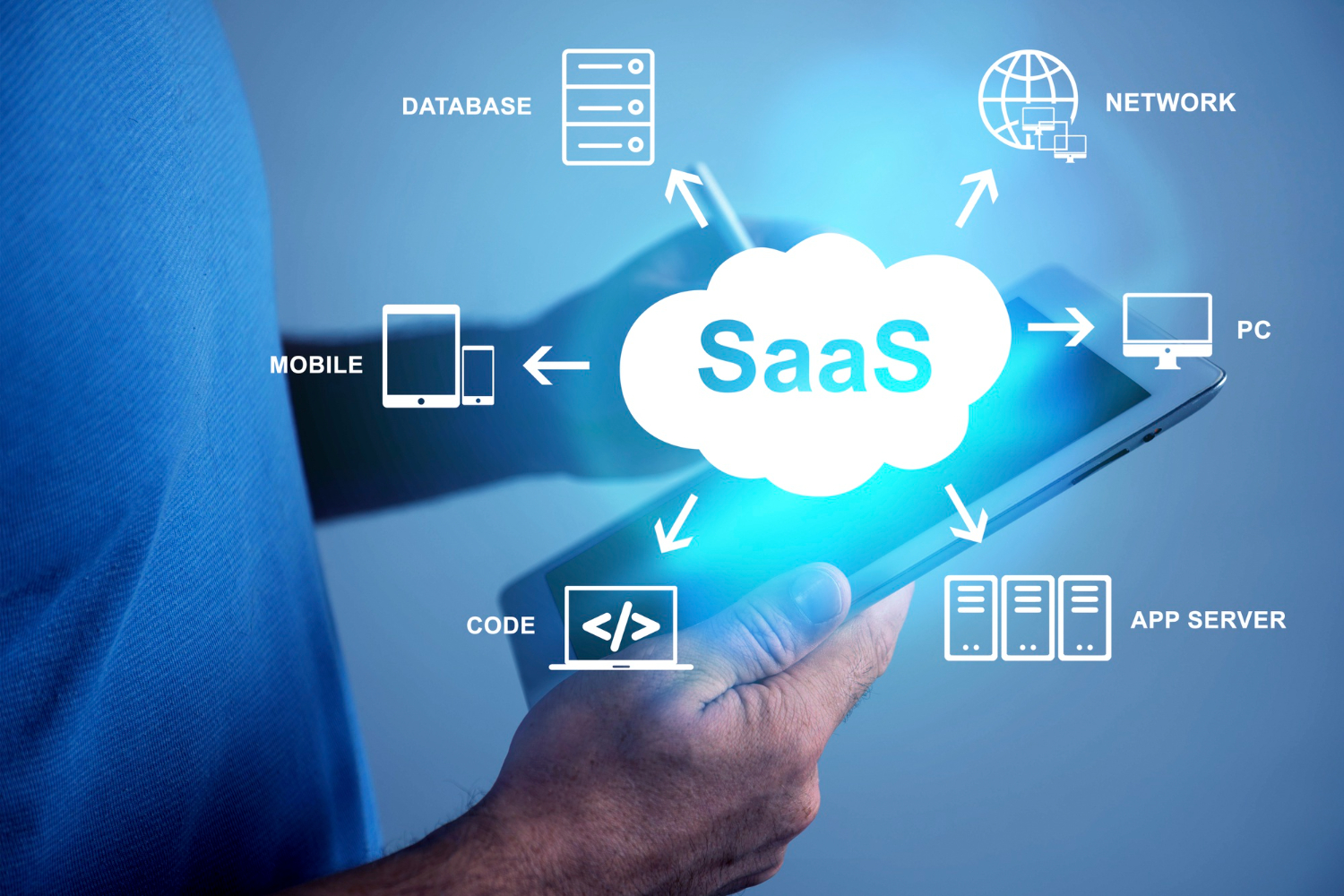Software as a Service (Saas) solutions play a role in today’s business landscape by supporting various operational functions like customer relationship management (CRM) marketing automation finance management and human resources processes through cloud based platforms. However the increasing variety of tools presents a challenge; maintaining seamless integration, among them. This is where the importance of SaaS application integration is highlighted.
This guide will take you step by step through incorporating SaaS tools in a way that maintains data accuracy and efficiency in workflows while also setting the stage for growth and adaptability.
The Significance of SaaS Integration
When your software, as a service tools are isolated from each other and don’t work together smoothly it results in having people manually input data reports that vary in accuracy and operational issues. Teams spend time moving between systems and valuable information is scattered across various datasets missing out on crucial insights.
When you incorporate your SaaS stack together…
- Get rid of the need to manually move data around.
- Enhance decision making by consolidating data sources.
- Simplify tasks.
- Enhance teamwork, among departments.
Whether you are a growing startup or a large business streamlining older systems, grasping the art of incorporating SaaS applications is a smart strategic decision that yields benefits in terms of saving time and improving productivity.
Step 1. Define Your Objectives, for Integration
Before delving into the tools and APIs available to you, for integration purposes; make sure to outline the specific objectives you aim to accomplish through the integration process first and foremost.
- Synchronizing customer information, between your CRM system and email service.
- Linking your software to your sales process.
- Bringing together information from tools into one central analytics dashboard.
Having defined goals will assist you in selecting the appropriate strategy and evaluating achievements after implementation.
Step 2. Outlining Your SaaS Network
Share the SaaS tools utilized by your organization. Categorize them based on their functions such as sales,marketing finance HR etcetera.Then examine the data flow, across these tools.This analysis will reveal any gaps,redundancies or crucial linkages that may exist.
For instance, your sales team utilizes HubSpot while your support team relies on Zendesk. Does the customer information seamlessly transfer between the two platforms? If not, support agents could overlook details when assisting users.
Selecting the Method for Integration is Crucial
When it comes down to SaaS software integration there are a couple of choices for you.
- Numerous software as a service (Saas) platforms provide built connections with commonly used tools, which are simple for users but may come with restrictions, in terms of adaptivity and personalization.
- Platforms for Integration often referred to, as iPaaS
Tools such as Zapier, Maker.io, Workato or Tray.io enable users to link applications with ready made templates and logical processes.This is particularly useful for teams that do not have developers in house and provide a user interface, for setting up automated workflows.
If you have specialized or unique requirements to meet your needs better suited for solutions or tailor made features.
When collaborating with vendors or consultants seek out firms that provide tailored SaaS integration solutions for reliable and efficient outcomes.
Step 4. Dealing With Security and Ensuring Compliance
When you combine systems together in your operations setup or infrastructure setup or structure or establishment (not entirely convinced by any of these options) it leads to having more ways to access your data (using many access points) that may be a positive aspect of system integration in terms of data accessibility and usability but also carries implications for security and privacy considerations regarding data handling and protection (keeping in mind the importance of complying with laws like GDPR and HIPAA). Make sure that any integration efforts are done in a way that aligns with the regulations such as GDPR and HIPAA as well as follows the recommended measures, for ensuring the security of your systems.
- Make sure to use API tokens or OAuth when verifying your identity.
- Please record all instances of data transfers and synchronization, for auditing purposes.
- Establish role access restrictions.
- Make sure that the security protocols of any third party integration software match up with your policies when you use them as a service provider.
Step 5. The Establishment and Evaluation of the Integration
After selecting your approach and confirming adherence to regulations or standards in place for the task, at hand; proceed with putting the integration into action by following these steps;
- Set up the integration using your selected platform or API.
- Establish guidelines for the timing and manner, in which data ought to synchronize.
- Establish protocols for managing errors during synchronization attempts or discrepancies.
- Make sure to test the integration before launching it live.
- Utilize trial. Example information.
- Make sure that the data moves accurately in both directions.
- Ensure that the correct prompts are activated at the moment.
- Testing the performance under loads is a good idea especially when dealing with large datasets synchronization.
- Utilize trial. Example information.
Step 6. Keeping an Eye On and Preserving
Maintaining integration is a process that requires attention as business practices change and software updates are implemented while new tools are introduced into the mix to ensure smooth operations.
- Make sure to check the synchronization logs frequently.
- Be sure to create notifications for any issues, with integrating systems.
- Examine performance indicators to identify areas of congestion.
- Make sure to conduct audits every 3 to 5 months.
Keeping your SaaS software integration maintained is crucial for it effectively supporting your operations as your business expands over time.
Dealing with Common Integration Hurdles; Tips, for Success
Sometimes with a solid plan, in place things can still take a wrong turn! Keep an eye out for these pitfalls;
Issues, with the compatibility of data formats
Various tools might adopt formats for identical data types, such as date formats or currency values which can be reconciled by standardizing the data prior to synchronization.
Failure to establish integrations with guidelines
This may result in the accumulation of redundant entries within your database system; it is advisable to consistently employ distinctive markers and consolidation strategies to mitigate this issue.
Limited APIs
Certain software as a service (Saas) tools may have limited APIs available, making it difficult for users as they might not provide all the required data access points needed for tasks, in their workflows. I recommend collaborating with your vendors but also considering alternative third party tools that could offer more extensive features and functionalities in order to improve your workflow efficiency and effectiveness.
The lack of coordination within the team
Your sales and marketing departments may hold varying expectations regarding an integration process so it’s important to engage all parties at the outset to establish objectives together.
Determined experts should be consulted at the times
If your company relies on tools extensively or requires intricate processes spanning different systems a solution could be engaging specialists, for assistance. Organizations providing SaaS integration services have the expertise you may need;
- Check out your environment.
- Select the tools and platforms.
- Create solutions for unique situations.
- Make sure that the system operates under all conditions and can handle a large workload while maintaining protection against threats.
Example:
A retail company that was expanding faced the challenge of keeping inventory data consistent between their ERP system and online store, while also syncing with their shipping provider’s platform. They effectively solved this issue by collaborating with a SaaS development service provider who helped them build a seamless, integrated SaaS solution. This not only improved inventory management but also enabled automated updates across all their sales channels.
Clockwise Software and similar companies excel in providing integration services to assist businesses in linking their distinct set of tools with tailor made solutions that suit their individual workflows.
Concluding Ideas
Incorporating your SaaS applications goes beyond being convenient – it involves establishing a cohesive and expandable framework for your business operations. With the strategy in place you can enhance efficiency, support teamwork effectively and improve decision making processes significantly.
When you aim to sync two tools or establish a network of interconnected platform hubs the core principles stand unchanged. Make plans first and foremost prioritize data precision and security and opt for the integration approach that best suits your requirements.
When you’re assessing suppliers or looking into using integration software as a service for your business needs or planning your company’s strategies internally¸ refer to this guide as your starting point and keep in mind that incorporating SaaS applications is no longer a nice to have; it’s vital for advancing digitally.

Andrej Fedek is the creator and the one-person owner of two blogs: InterCool Studio and CareersMomentum. As an experienced marketer, he is driven by turning leads into customers with White Hat SEO techniques. Besides being a boss, he is a real team player with a great sense of equality.
